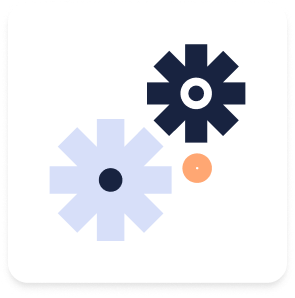
Agile OKRs

Course overview
About Agile OKRs
Create alignment and engagement around measurable, ambitious goals to advance strategic priorities and realize your vision.
In this course, you'll discover why objectives and key results are so effective and how they allow agile teams to measure progress toward goals while preserving their ability to pivot in unpredictable, changing environments.
Lessons in this course:
- Goal-Setting Fundamentals
- Strategic Planning and Alignment
- Objectives and Key Results
- OKRs in Scrum and Antipatterns
Take this course as an individual to boost your resume and skill set. Or upskill your teams to use OKRs effectively for strategic planning.

Time: Varies by the trainer offering the course, with most courses between 4-5 hours
Format: Live
Credential: Microcredential
Prerequisites: None, although some basic familiarity with scrum is recommended
What you'll get: 4-5 hours of learning with an experienced agile trainer and a digital badge to showcase your new skills. Your microcredential never expires.
Community Badge Program Course: This course has been derived from our Community. This means that the course topic was sourced directly from a Certified Scrum Alliance Trainer or Certified Scrum Trainer. The quality of the course content and the credential earned from a Community Badge Program course carries the same weight and value as any other Scrum Alliance microcredentials.

Who Should Take Agile OKRs?
Agile OKRs is ideal for anyone who wants to increase their understanding and use of this goal-setting system. Individual contributors will learn how OKRs enable a collaborative goal-setting process while management and C-suite professionals will see how agility and OKRs can be seamlessly integrated to support strategic planning.
Designed for:
- Anyone who wants to understand this lightweight goal-setting framework
- Agile teams
- Professionals from any industry
- Scrum teams
- Product owners
- Scrum masters
- C-suite leaders
- Managers
- Business owners

Unmatched quality and scale
"Simply amazing learning experience!"
"My experience at Scrum Alliance was simply exceptional ... "

Developed by community experts
Our community is at the heart of everything we do. This course wouldn't be possible without the subject matter experts and reviewers who generously share their time and talent. Join us in recognizing these individuals for helping us inspire and empower our global agile community.

Is a microcredential worth it?
Microcredentials are a great way to continually add new skills with fast and flexible formats. Here are just a few reasons microcredential training is a worthwhile investment for you and your team.
- Focused expertise — gain specialized knowledge in a specific area
- Flexible learning — learn the way you prefer by choosing from live or on-demand learning formats
- Cost-effective — typically less expensive than certifications or degree programs
- Relevant — topics prioritized to cover industry trends and emerging technologies
- Expedient — earn a credential in hours as opposed to weeks, months, or years
- Recognizable — validated by Scrum Alliance, a globally recognized credentialing body
- Practical — build skills and knowledge immediately applicable in your role
- Stackable — combine microcredentials to build comprehensive learning pathways
OKR stands for objectives and key results. These metrics are performance indicators that measure progress toward goals.
Many leading organizations use OKRs for goal setting. This type of goal setting is clear, measurable, and supports alignment across all teams and individuals. Instead of supervisors dictating exactly how the people who report to them should achieve goals, OKRs get every employee engaged in the goal-setting process by determining how they will make progress toward the key results and overall objective.
The best agile OKR practices can keep teams motivated and working toward common goals. Ultimately, this supports the organization's ability to execute strategy while empowering teams to make progress on transparent, clearly defined goals.
As agile teams, we value responding to change over following a plan; however, OKR planning and goal-setting integrates cohesively with agility. The teams collaborate on objectives and how they will achieve and measure results.
Objectives are specific, clear goals. Objectives align with the organization's strategy and should be ambitious and challenging but also achievable.
Progress toward objectives is measured by key results. Key results are quantifiable outcomes that help you determine your progress toward reaching a goal and when the goal has been achieved.
Here's an example:
Objective. Increase recurring revenue.
Key results.
- Reach 12% increase in average monthly recurring revenue per customer by the end of Q3.
- Increase subscription customers by 15% in the next quarter.
Have additional questions?

Register for Agile OKRs today!
Upskill in the goal-setting approach used by today's leading organizations.

